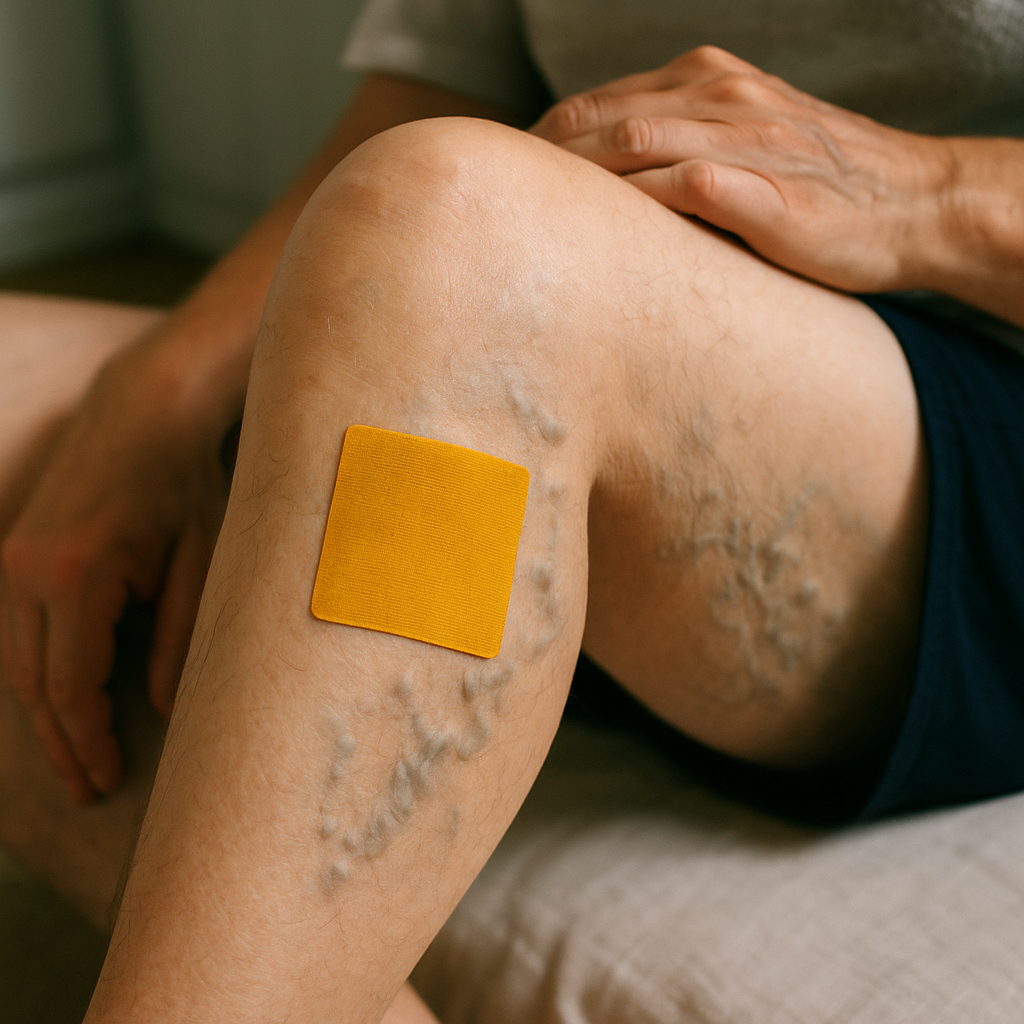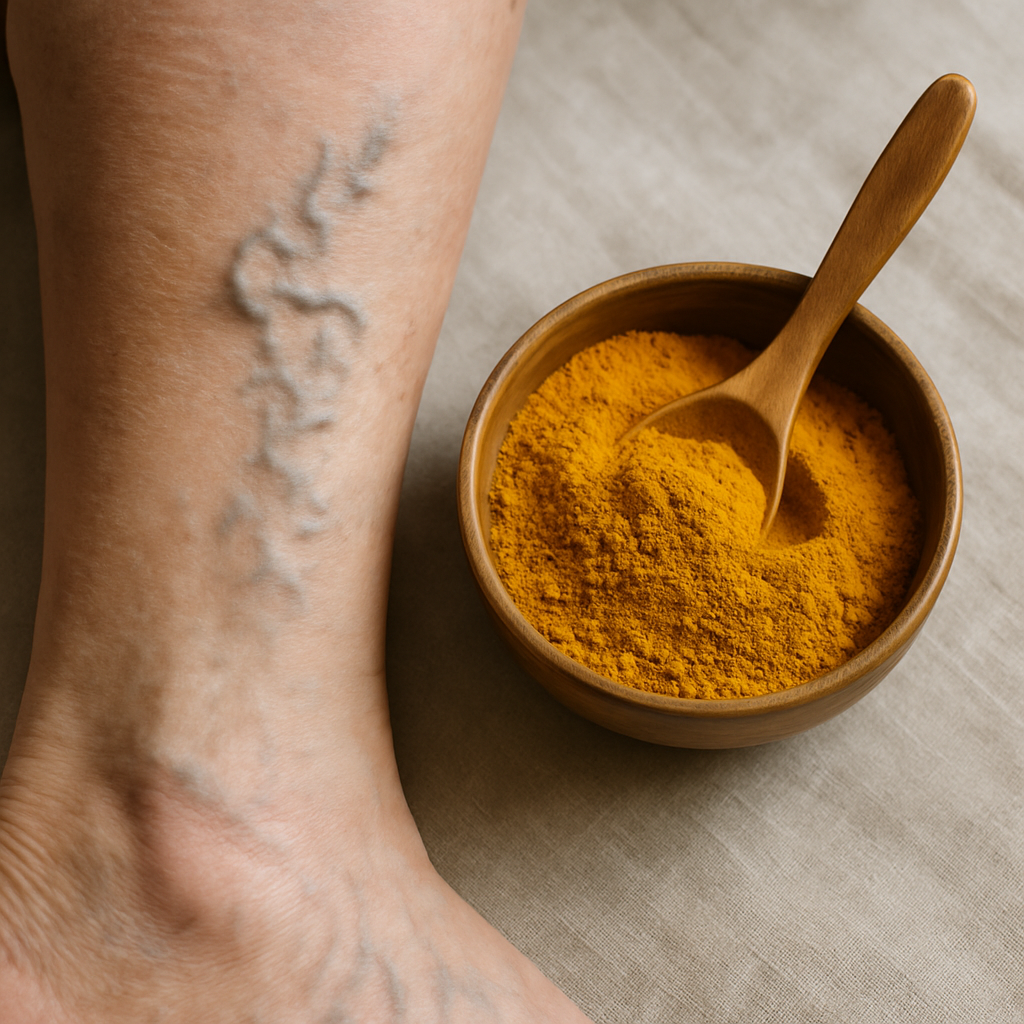Ask Ayurvedic doctor a question and get a consultation online on the problem of your concern in a free or paid mode. More than 2,000 experienced doctors work and wait for your questions on our site and help users to solve their health problems every day.
Shop Now in Our Store
How to Treat Varicose Veins with Turmeric: Natural Remedies

Varicose veins are more than just a cosmetic concern—they can cause discomfort, pain, and sometimes lead to more serious health issues. Many people look for natural ways to manage or reduce the appearance of varicose veins, and turmeric has emerged as a popular remedy. But how effective is turmeric for varicose veins? And what about turmeric patches for varicose veins — do they really work?
In this article, we'll explore how to treat varicose veins with turmeric, including Ayurvedic insights, practical home remedies, and the use of turmeric varicose vein patches. Whether you’re looking for how to use turmeric powder for varicose veins or curious about the benefits of turmeric patches, this guide covers it all. Let’s dive into the natural healing powers of turmeric and see if it might be the answer you've been searching for.

How to Treat Varicose Veins with Turmeric: Ayurvedic Insights
Turmeric has been used in Ayurvedic medicine for centuries, praised for its anti-inflammatory and antioxidant properties. These qualities make it a promising natural remedy for varicose veins. The main active compound in turmeric, curcumin, is thought to help reduce inflammation and improve blood circulation—two key factors in managing varicose veins.
From an Ayurvedic perspective, varicose veins occur due to an imbalance in the body’s doshas, mainly Vata and Kapha, which affect circulation and blood flow. Turmeric is believed to balance these doshas, thereby supporting vein health and alleviating symptoms like swelling and discomfort. But how exactly can you use turmeric for varicose veins safely at home?
How to Use Turmeric for Varicose Veins Safely at Home
There are several ways to apply turmeric for varicose veins, but safety and consistency are key. One popular method is to make a turmeric paste by mixing turmeric powder with water or coconut oil and applying it directly on the affected areas. This topical application can help soothe the skin and potentially reduce inflammation over time.
Internally, turmeric can be consumed as a tea or supplement to support overall circulation, but always consult with a healthcare professional before starting any supplement regimen. Remember, turmeric stains, so wear old clothes and be cautious during application!

Turmeric Patches for Varicose Veins: Do They Really Work?
In recent years, turmeric varicose vein patches have become increasingly popular as a convenient, mess-free way to harness turmeric’s benefits. But what exactly are turmeric patches, and how do you use them?
What Is a Turmeric Varicose Vein Patch and How to Use It
A turmeric patch for varicose veins typically contains a concentrated amount of turmeric extract along with other natural ingredients. The patch is designed to stick to the skin over the affected vein area, slowly releasing turmeric compounds for absorption.
To use, you simply apply the patch to clean, dry skin—usually on the legs—and leave it on for several hours or overnight. Many people find this method easier than making homemade pastes, especially since it doesn’t leave stains or require daily preparation.
Choosing the Best Turmeric Patch for Varicose Veins
When selecting turmeric patches for varicose veins, quality matters. Look for products with natural ingredients, clear usage instructions, and positive reviews from users who have seen real results. Avoid patches with synthetic fillers or harsh chemicals, which can irritate sensitive skin.
Some turmeric patches also combine other herbs and oils known to improve circulation and vein health, enhancing the overall benefits. If you're new to this, try testing the patch on a small skin area first to avoid any allergic reactions.
Additional Ways to Use Turmeric for Varicose Veins Treatment
Beyond patches and topical pastes, there are other ways to incorporate turmeric into your routine for varicose vein relief. Turmeric can be used in daily cooking, teas, or as a supplement. Including turmeric regularly in your diet may improve your body’s overall inflammation response and promote better circulation, which is essential for managing varicose veins.
Some people find mixing turmeric with other natural ingredients like ginger or honey enhances its effectiveness. For example, a warm turmeric tea made with fresh ginger can be soothing and support vein health from the inside out. While these methods aren’t quick fixes, they contribute to long-term vascular wellness when combined with other healthy lifestyle habits.

How to Use Turmeric Powder for Varicose Veins Relief
Turmeric powder is a versatile and affordable way to use this spice for varicose veins. Here’s a simple home remedy you can try:
-
Mix turmeric powder with a small amount of coconut oil or olive oil to create a thick paste.
-
Apply the paste gently on the swollen or visible varicose veins.
-
Cover the area with a clean cloth or bandage to keep the paste in place.
-
Leave it on for 30 minutes to an hour before washing off with warm water.
-
Repeat this process 3-4 times a week.
This method combines turmeric’s anti-inflammatory properties with the moisturizing effect of the oil, helping to soothe irritated skin and reduce swelling. Just be careful because turmeric powder can temporarily stain your skin a yellowish color — it will fade, but still, worth keeping in mind!
Another option is to take turmeric powder internally by adding it to smoothies, soups, or golden milk recipes. This not only helps with varicose veins but offers overall health benefits.
Turmeric Benefits for Varicose Veins and Circulation Support
Why does turmeric work well for varicose veins? It’s all down to its active ingredient, curcumin, which has several important benefits:
-
Anti-inflammatory effects: Varicose veins are often inflamed veins, and curcumin helps to calm this inflammation, reducing pain and discomfort.
-
Improved blood circulation: Curcumin promotes better blood flow, preventing blood from pooling in the veins, which is a major cause of varicose veins.
-
Antioxidant properties: Turmeric helps protect blood vessels from oxidative stress, which can weaken vein walls and valves over time.
These combined effects make turmeric a promising natural treatment to support vein health. While turmeric alone won’t cure varicose veins, when used regularly alongside compression stockings, exercise, and a healthy diet, it can be a valuable part of your vein care toolkit.
Conclusion
Turmeric offers a natural, accessible way to support vein health and potentially ease the discomfort associated with varicose veins. From traditional Ayurvedic uses to modern turmeric patches for varicose veins, this golden spice has several promising benefits thanks to its anti-inflammatory, antioxidant, and circulation-boosting properties.
Whether you choose to use turmeric powder for varicose veins at home or prefer the convenience of a turmeric varicose vein patch, consistency is key. Remember that natural remedies take time and won’t replace medical treatments in severe cases. Always consult your healthcare provider before starting any new treatment, especially if you have underlying health conditions or are on medications.
If you’ve been wondering how to treat varicose veins with turmeric, now you have a variety of practical options to explore. Why not give turmeric patches a try and see if they work for you? Share this article with friends or family who might benefit from natural varicose vein relief too!
FAQs
Can turmeric varicose vein patch completely cure varicose veins?
No, turmeric patches can’t completely cure varicose veins. They may help reduce inflammation, swelling, and discomfort, but varicose veins usually require comprehensive treatment, including lifestyle changes or medical interventions.
How often should I use turmeric for varicose veins?
For topical treatments like turmeric paste or patches, using them 3-4 times a week is common. Internally, turmeric can be taken daily in moderation. Always follow product instructions or consult a healthcare provider.
Are there any side effects of using turmeric for vein health?
Turmeric is generally safe but can cause skin irritation or allergic reactions in some people, especially when applied topically. Staining of skin or clothes is also common. Ingesting large amounts can cause digestive upset. Patch test first if unsure.
What is the difference between turmeric powder and turmeric patches for varicose veins?
Turmeric powder is raw turmeric root ground into a powder that you can use to make pastes, teas, or supplements. Turmeric patches contain concentrated turmeric extract designed for easy, controlled topical delivery without the mess. Both have benefits but differ in application convenience and absorption.
This article is checked by the current qualified Dr Sujal Patil and can be considered a reliable source of information for users of the site.

